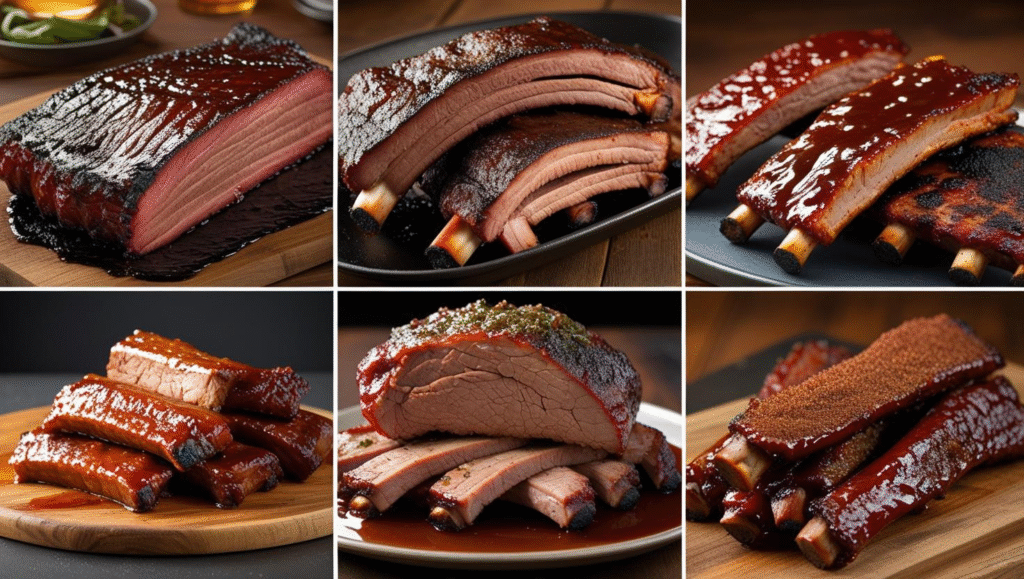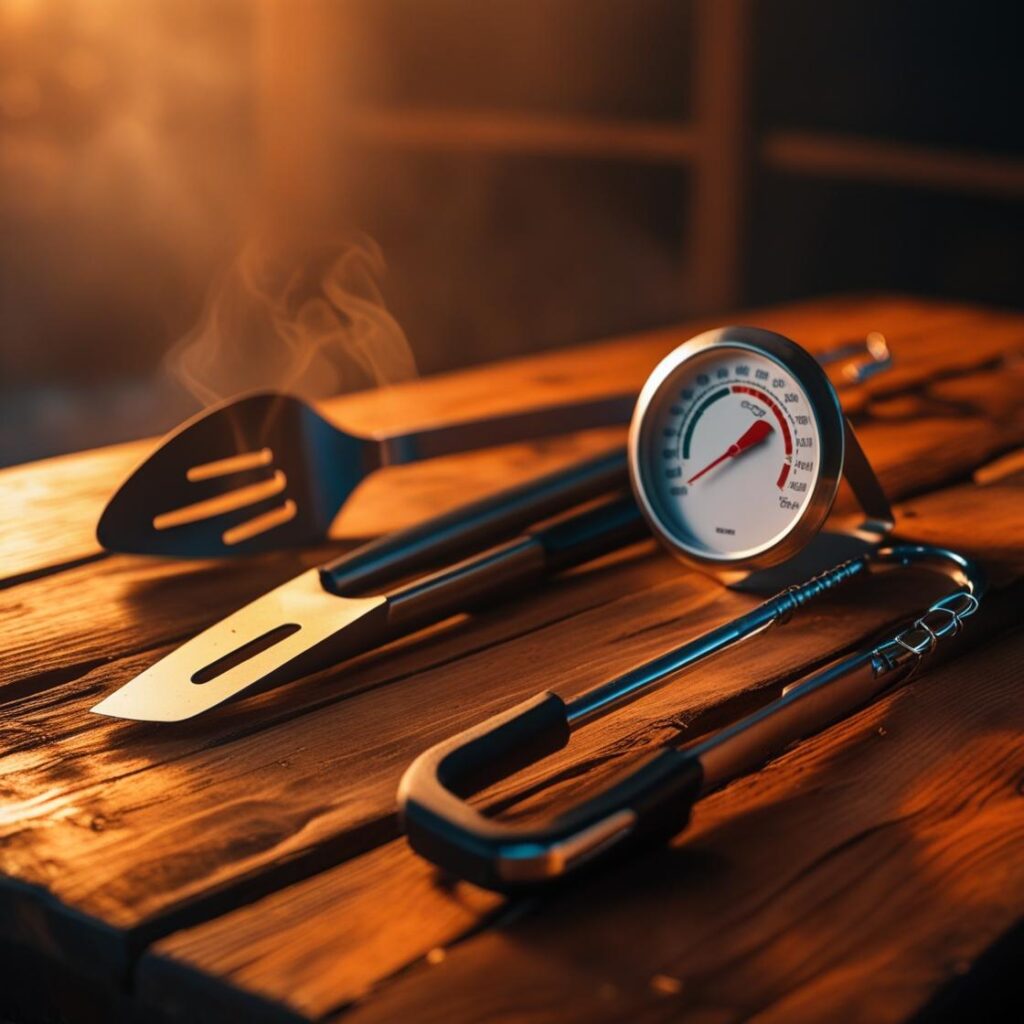When to Pull Pork Butt From the Smoker for Best Results
The art of smoking a pork butt is a true test of patience and precision. You’ve put in the hours, carefully managed your temperature, and watched as that big piece of meat transformed. But as the aroma fills the air, a crucial question arises: “How do I know when it’s ready?” The difference between a tough, chewy pork shoulder and a fork-tender, melt-in-your-mouth masterpiece comes down to one critical decision: knowing exactly when to pull pork butt from the smoker. This guide will walk you through the key indicators that signal doneness, ensuring you achieve perfect pulled pork every single time.
The Golden Rule: Temperature is King (But Not the Only King)
Many beginners believe that a pork butt is done simply because it has reached a specific target temperature, usually around 200°F. While an internal temperature is the most important indicator, it’s not the only one. Pork butt and pork shoulder contain a lot of tough connective tissue, primarily collagen. This collagen needs to break down into gelatin to give you that fall-apart tenderness. This process happens at a specific temperature range, but it also takes time.
So, what is the right pork butt smoker temperature? The consensus among pitmasters is that your pork butt is ready somewhere in the range of 195°F to 205°F (90°C to 96°C). However, the specific number can vary depending on the cut, the smoker, and the cook. This is why you must rely on more than just temperature alone to know when to pull pork butt.
Beyond the Numbers: The Three Key Tests for Done-ness
To truly master the art of knowing when is pork butt done, you need to use a combination of three tests: a thermometer, a probe test, and visual cues.
1. The Probe Test (The Most Reliable Indicator)
This is the most accurate way to check for pulled pork tenderness. Forget the numbers on the thermometer for a moment. Once your pork butt hits about 195°F, insert your probe thermometer into the thickest part of the meat.
- The Goal: The probe should slide into the meat with almost no resistance, just like pushing a hot knife through a stick of butter.
- The Why: If you feel any resistance, it means the tough collagen has not fully broken down yet. Even if the pork butt internal temp is 200°F, if it feels tough, it is not ready.
- The How: Use a quality digital thermometer. If you feel resistance, close the smoker lid and let it continue to cook. Test again in 15-30 minutes. The difference between 195°F and 205°F is a world of difference in tenderness.
This method gives you a direct indication of the meat’s texture, which is the ultimate goal of a good cook.
- Suggested Image Alt Text: A person inserting a probe thermometer into a pork butt, checking for the “butter-like” feel that indicates perfect pulled pork tenderness.
2. The Bone Test & The Fork Twist
The bone test is a simple but effective method to confirm that the pork butt is done.
- The Goal: The shoulder blade bone (the large bone in a bone-in pork butt) should slide out of the meat cleanly with almost no effort.
- The How: Once you believe the pork butt is ready, grab the bone and give it a gentle twist. If it turns and pulls out easily, you have achieved the perfect level of tenderness. If you have to struggle to pull it out, it’s not ready.
The fork twist is a similar method. Grab a fork and twist it in a part of the meat away from the bone. If the meat shreds and falls apart easily with a simple twist, you’ve hit your mark.
The Journey to Doneness: Managing The Stall and the Wrap
The path to a tender, juicy pork butt is rarely a straight line. Every smoker encounters a phenomenon known as “the stall.”
What is The Stall?
After hours of cooking, your pork butt’s internal temperature will rise steadily until it hits a range of about 150°F to 170°F (65°C to 77°C). At this point, the temperature will stop rising and can even drop. This is “the stall.” It happens because moisture evaporating from the surface of the meat is cooling it down, much like sweating cools your body.
Should I Wrap My Pork Butt?
This is a key question when you’re trying to figure out how to know when pork butt is done. Wrapping, often called the “Texas Crutch,” is a popular method to get through the stall faster.
- The Method: Once your pork butt hits the stall, wrap it tightly in aluminum foil or pink butcher paper. This traps the moisture and heat, allowing the temperature to continue rising.
- The Benefits: It significantly speeds up the cooking time and keeps the meat incredibly moist.
- The Downside: Some purists argue it can soften the bark. If you love a crispy bark, you can unwrap it for the last hour of the cook.
The Final Step: The Rest
Once you have determined when to pull pork butt from the smoker using the probe test and the bone test, you are not done. The final, crucial step is the rest.
- The Why: Just like a steak, a pork butt’s juices are concentrated in the center of the meat. If you slice or shred it immediately, all of those juices will pour out onto your cutting board, leaving you with a dry steak equivalent.
- The How: Remove the pork butt from the smoker and, while it’s still wrapped, place it in a dry cooler or an oven set to the “warm” setting (or the lowest temp possible). Let it rest for at least 1-2 hours. This allows the juices to redistribute throughout the meat, resulting in a juicy, flavorful final product. You can learn more about the science of meat doneness and resting in our article on Why Is My Steak Tough and Dry? How to Fix It for Good.
Troubleshooting: What If It’s Still Tough?
The Ultimate Goal: A Fork-Tender Pork Butt Finished Temp
Ultimately, the perfect pork butt finished temp is not a single number but a feeling. It’s the sensation of your probe gliding in effortlessly, the sight of the bone pulling out cleanly, and the unmistakable texture of fall-apart meat. The goal is a pork butt that is so tender it falls apart when you try to lift it out of the pan. This is the hallmark of truly great pulled pork.
This understanding is what separates good BBQ from great BBQ. Focusing on the texture, not just the numbers, is the secret to getting a tender, juicy result every time. For tips on achieving that perfect bark and a deep smoke flavor, a great starting point is our guide on the great Pellet Grill vs Charcoal for Pork BBQ debate.
FAQ: More on Pork Butt
Q: How do I know when my pork shoulder is done? A: The same principles apply to pulling pork shoulder. The best way to know when it’s done is to use the probe test, checking for that “probe tender” feel, and ensuring the bone can be removed easily.
Q: What is the optimal pork butt finished temp? A: There is no single “optimal” temperature. The range is 195°F to 205°F. You should pull your pork when the probe glides in effortlessly, regardless of the exact temperature within that range.
Q: Why is my pork butt internal temp not rising? A: You’ve likely hit “the stall.” The meat is cooling itself down with evaporation. Wrapping your pork butt in foil or butcher paper is the best way to get through this phase and continue the cook.
Q: Can I rest my pork butt in a dry cooler? A: Yes, a dry cooler is an excellent place to rest a pork butt. Simply place the wrapped pork butt inside and close the lid. The insulation will keep the meat hot for several hours, allowing it to rest perfectly without overcooking.
Conclusion: Trust Your Instincts, Trust Your Probe
Knowing when to pull pork butt from the smoker is more than a science; it’s an art that combines a precise knowledge of temperature with a feel for the meat itself. Never rely solely on a single number. Instead, use a combination of indicators: wait until your pork butt reaches the 195°F-205°F range, then check its tenderness with a probe. The moment it feels like butter, you’ve won. Remember to rest it for at least an hour to lock in those juices, and you’ll have a pulled pork masterpiece that’s well worth the wait.






